Renowned for being a king with the soul of a poet, it is not surprising that the Tomb of Tu Duc possesses an equally exquisite architecture. Nestled tranquilly amidst the lush greenery of the picturesque mountains, it is no exaggeration to say that this resting place, in the peaceful land of a thousand autumns, is one of the most impressive architectural works of the 19th century.
One of the must-visit tourist attractions in Hue is undoubtedly the Tomb of Tu Duc. This is the tranquil resting place of King Tu Duc, a monarch of the Nguyen Dynasty who carried within him the soul of a poet and a romantic spirit. Let’s explore the uniqueness of this architectural marvel through the following article.
Table of Contents
Overview of Tu Duc Tomb in Hue
Tu Duc Tomb Address
- Address: Duong Xuan Thuong Village, Cu Chanh Commune, Thuy Bieu Ward, Thuy Xuan District, Hue City
Located on a peaceful piece of land in the narrow valley of Duong Xuan Thuong Village, Tu Duc Tomb is situated to the right of the picturesque Vong Canh Hill. Despite the Nguyen Dynasty ruling for 143 years with 13 kings, only 7 tombs for 7 monarchs were constructed and preserved until today.
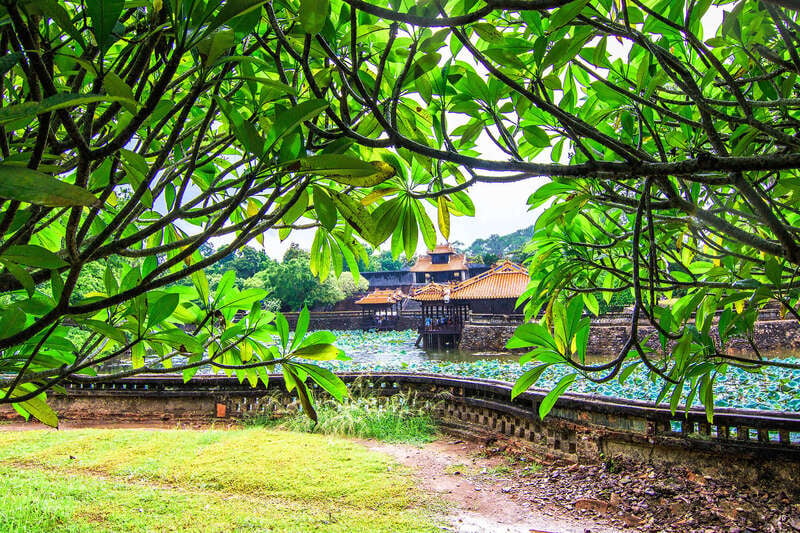
Among them, Tu Duc Tomb is honored as one of the four most beautiful tombs in the ancient capital, recognized by UNESCO as a World Cultural Heritage. It is also proud to be one of the first historical sites in Vietnam featured in the 3D digital museum under the Google Arts & Culture project. With these accolades, the resting place of the poet king has become one of the most renowned attractions in Hue, alongside places like Hon Chen Palace, the Imperial City of Hue, Minh Mang Tomb, Thien Mu Pagoda, and more.
Opening hours and ticket prices for Tu Duc Tomb
The opening hours and ticket prices for Tu Duc Tomb are undoubtedly of interest to many tourists. The specific entrance fees are as follows:
- Vietnamese tourists: VND 100,000/adult, VND 20,000/child.
- Foreign tourists: VND 150,000/person.
Tu Duc Tomb ticket prices are quite affordable, suitable for students and scholars with a desire to explore this architectural marvel. The tomb is open from 6:30 AM to 5:00 PM during the summer and from 7:00 AM to 5:00 PM during the winter. With these hours, visitors can allocate their time wisely for exploring their chosen tourist destinations in Hue.
Visiting Tu Duc Tomb: What Transportation Options Are Suitable?
Situated just 6 km from the city center, Tu Duc Tomb is one of the few royal tombs of the Nguyen Dynasty located near the urban area. Therefore, you can easily and conveniently travel to the tomb using various means of transportation, such as motorbikes or even bicycles if you don’t mind the intense Hue sunlight. Taxis are also readily available.
If traveling by motorbike, you can follow this route: Bui Thi Xuan – Huyen Tran Cong Chua. Upon reaching this road, continue for a stretch, and then you can ask locals along the way for directions to Tu Duc Tomb. Motorbikes are a popular choice among young people exploring Hue.
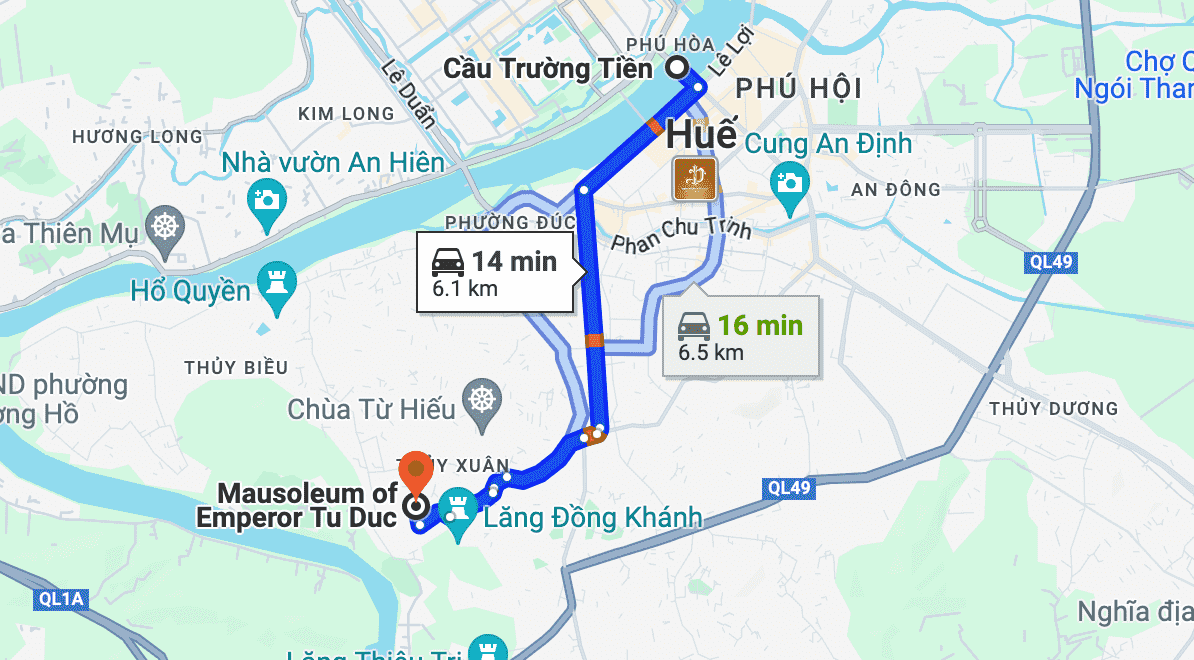
If you wish to visit multiple locations like Khai Dinh Tomb, Tu Duc Tomb, the Imperial City of Hue, and Thien Mu Pagoda,… You can consider using the car rental services in Hue by VnCarRentals.com. With a professional team and years of experience, they ensure you have a safe and comfortable journey.
Moreover, if you are in Da Nang or Hoi An and want to plan a day trip from Danang To Hue there to explore Tu Duc Tomb, you can easily book with us via WhatsApp at +84886660396.
A Brief Overview of King Tu Duc and the Construction of His Tomb
Born with the name Nguyen Phuc Hong Nham, King Tu Duc was the fourth son of King Thieu Tri. He holds the record for the longest reign – 36 years (1847 – 1883). During his lifetime, he was known for his kindness, concern for the country, and a high level of education in Indochina, especially in Confucianism.
Ascending to the throne amid external threats and challenges, King Tu Duc demonstrated his mastery in statecraft, displaying careful consideration and thoughtful deliberation in all matters. Despite the demands of his reign, he maintained a poetic and dreamy soul, full of love for the charming landscapes of the surrounding mountains and rivers. Constantly plagued by illnesses, King Tu Duc decided to construct this tomb as a place of rest, a sanctuary to momentarily forget about state affairs, conflicts, and the intricacies of the royal court, as well as to prepare for the eventuality of sudden death.
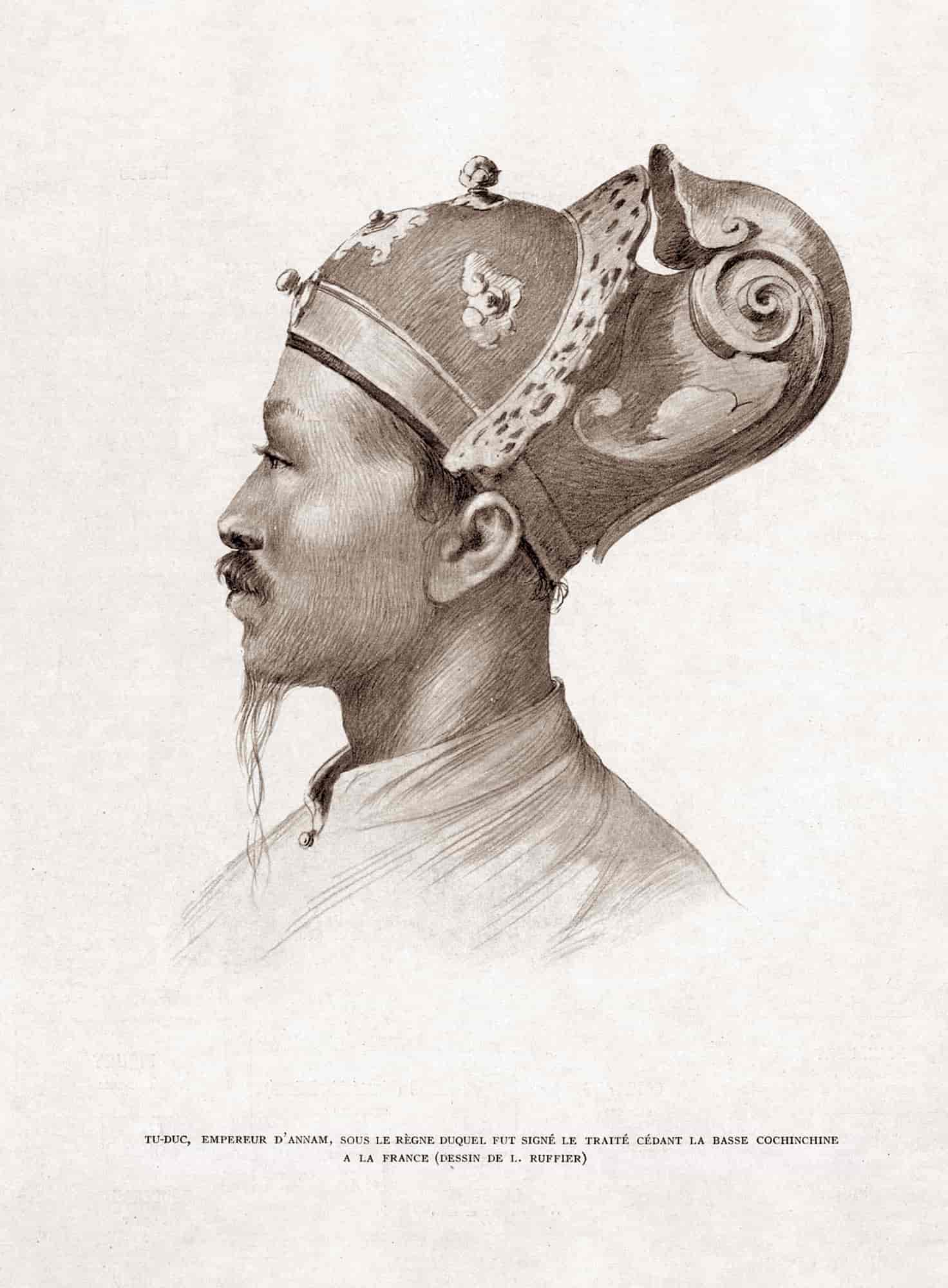
In December 1864, the construction of Tu Duc Tomb officially began, involving over 6,000 soldiers and workers for excavation, embankment, construction of walls and the tomb. Tu Duc Tomb went through several name changes before being known as Khiem Lang, its current name. Initially, the king named the tomb Vạn Niên Cơ, signifying a timeless structure. He estimated the construction time to be around six years.
However, to expedite the completion, the court mobilized hundreds of thousands of boatmen, peasants, and laborers in the harsh weather conditions of the ancient capital. This directly led to the Chay Voi Uprising by the Doan Huu Trung brothers in 1866. Though quickly suppressed, the revolt significantly affected the reputation of the king.
To appease the people, King Tu Duc wrote a confessional proclamation and changed the tomb’s name from Vạn Niên Cơ to Khiem Cung. The word ‘Khiem’ here signifies modesty and humility. All the structures within the tomb, big and small, incorporate ‘Khiem’ in their names.
In 1873, Khiem Cung was officially completed. Ten years later, upon King Tu Duc’s passing, the tomb was officially renamed Khiem Lang and has stood to this day, alongside the familiar name of Tu Duc Tomb that people commonly use.
The Unique Spatial Structure of Tu Duc Tomb
From the very first moment you arrive, you will be amazed by the picturesque and poetic scenery of this tranquil landscape. While the tomb of Gia Long possesses an ancient and solemn beauty, Minh Mang’s tomb exudes the utmost magnificence and grandeur. Khai Dinh’s tomb is designed with a blend of classical and modern elements, incorporating a touch of innovation in both construction materials and decorations. In contrast, Tu Duc Tomb exhibits an elegant and more poetic charm.
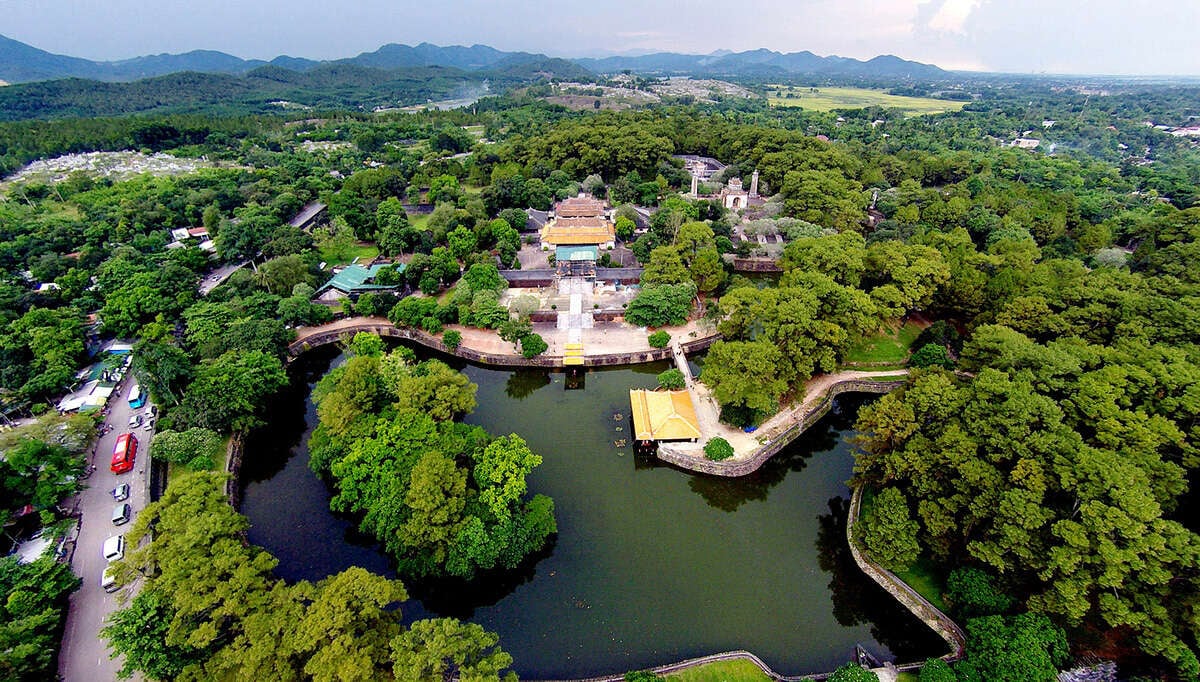
Built on a vast land of up to 12 hectares, Tu Duc Tomb is divided into two main areas: the burial palace area and the tomb area, featuring nearly 50 structures of various sizes scattered throughout. These two sections are arranged in harmony, with the forecourt facing Mount Giang Khiem, the backyard backed by Mount Duong Xuan, and the main axis along Luu Khiem Lake.
The main and auxiliary structures are arranged in a balanced manner, not overly dense, nestled peacefully amidst rows of lush pine trees and serene small lakes. All of these elements contribute to the overall spatial harmony of the tomb, preserving the utmost solemnity of the imperial resting place while delicately exuding a romantic and lofty atmosphere, true to the essence of a king with a poetic soul.
Explore Tu Duc Tomb in Hue
Khiem Cung Gate
This is a two-story structure in the form of an arcades building located on a raised platform, aligned with Du Khiem Ta, and in the middle is Hoa Khiem Palace. The construction is situated by a lake, incorporating ‘minh duong’ elements to ‘gather water’ and ‘accumulate blessings.’ During his lifetime, King Tu Duc often visited here to relax whenever he came to the tomb. This was also the place where he frequently handled state affairs. After his passing, Hoa Khiem Palace was used as a place to worship him and the queen.
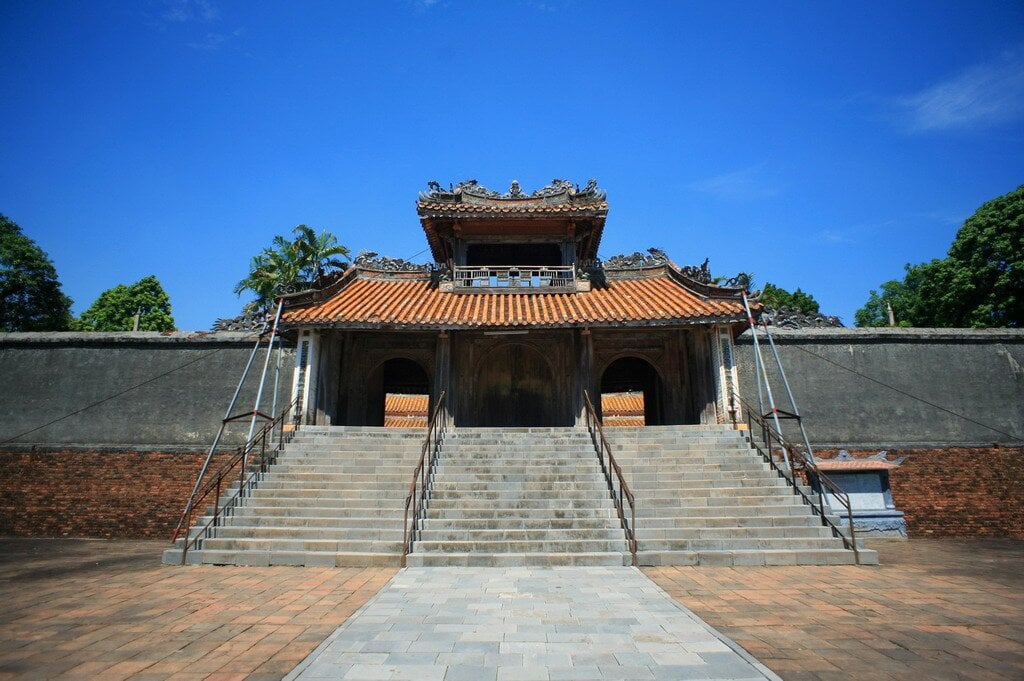
At Khiem Cung Gate, people often release lotus flowers. During the blooming season, the subtle fragrance wafts through the air with the breeze, creating a gentle and serene atmosphere for anyone visiting. In the lake, there are small islands for planting flowers and raising animals. Surrounding Khiem Cung Gate are Xung Khiem Ta and Du Khiem Ta. This is where the king would often sit to read books, compose poetry, and enjoy the picturesque natural scenery with the scent of grass permeating the air and the melodious calls of birds.
Luong Khiem Palace
Located behind Hoa Khiem Palace, Luong Khiem Palace used to be a place where the king would relax and enjoy tea. After his death, the palace was repurposed as a place to worship the spirit of his mother, Lady Tu Du. To the right of the main palace is On Khiem Luong, where royal utensils were stored.
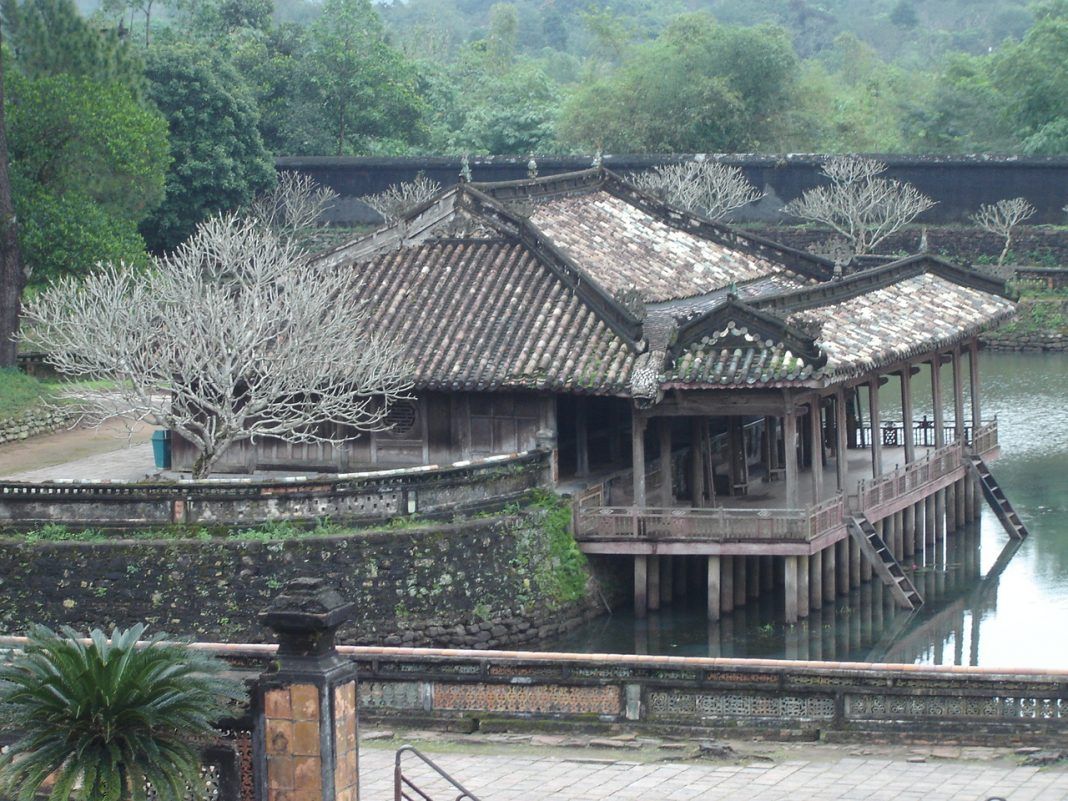
Minh Khiem Theater
It would be a great omission in your journey to Tu Duc Tomb if you unintentionally overlook Minh Khiem Theater. Situated to the left of Luong Khiem Palace, Minh Khiem Theater was where the king often went to enjoy performances.
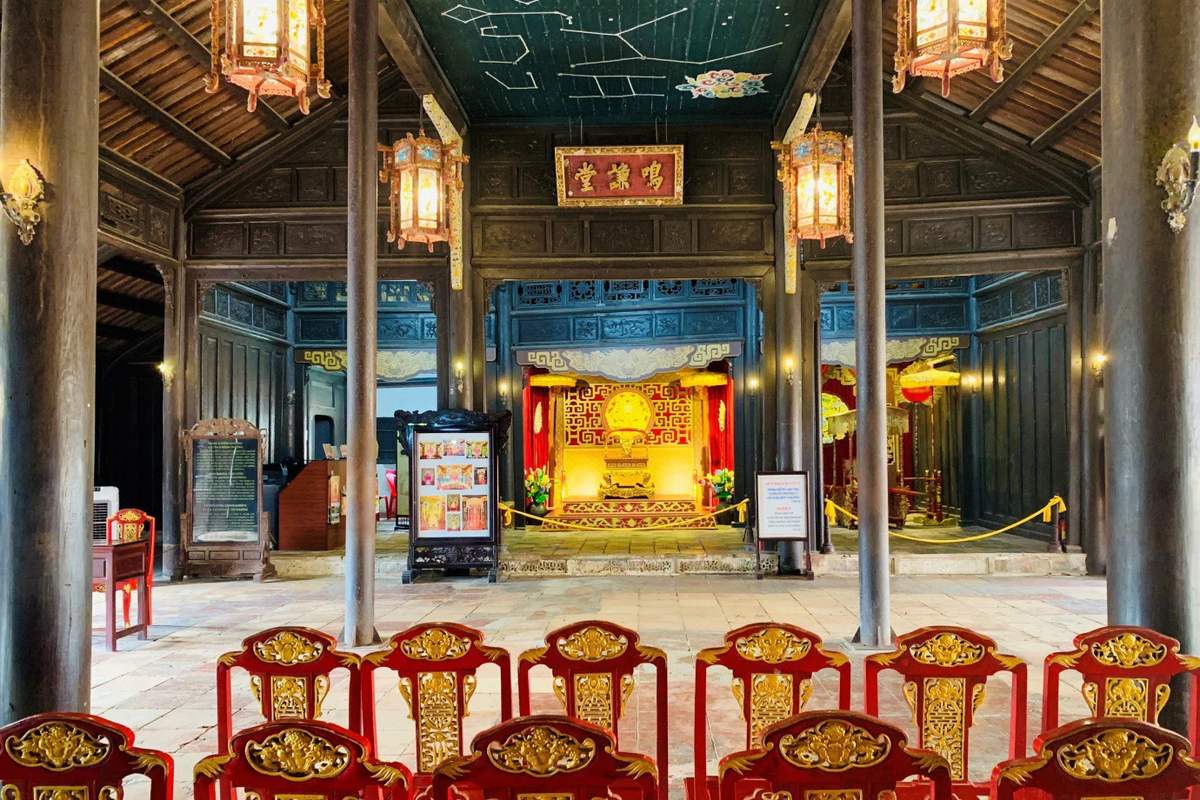
It is one of the most impressive architectural structures among the tomb complex, featuring intricately carved pillars and prominent patterns. When the theater is closed, looking from the outside, you will see a dazzling and enchanting scene, with countless candles illuminating the space. Currently, Minh Khiem Theater is one of the oldest theaters in Vietnam.
Tinh Khiem Island
Originally a piece of land where the king planted flowers and raised animals, Tinh Khiem Island boasts a refreshing atmosphere and clean air. With a long canal and three gracefully arched bridges, it leads you to a lush green pine hill. During his lifetime, the king often chose this place to admire flowers, compose poetry, and read books.
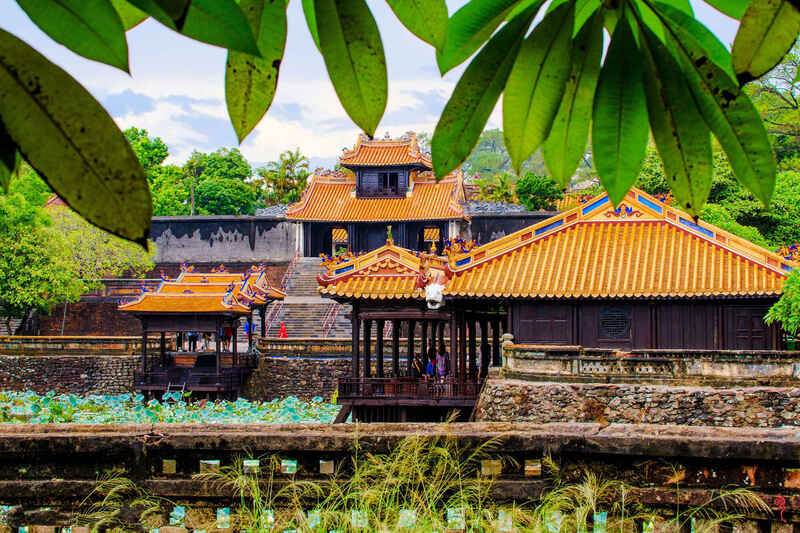
Royal Tomb Area
As the most significant structure within Tu Duc Tomb, the royal tomb area of the king is built directly behind the burial palace. Moving towards Bai Dinh, you will see two rows of stone dragons standing guard with solemn dignity, and behind them is Bi Dinh. This is where a 20-ton stone tablet is engraved with Khiem Cung Ky, a composition written by King Tu Duc himself. The entire 4,935-character essay is his autobiography about his life, accomplishments, and sins throughout history. He confesses his faults: “Lack of insight into knowing people is my fault; misusing people is also my fault; hundreds of things left undone are all my faults…” In the essay, he also mentions the risks, illnesses, and sorrows he experienced during his reign.
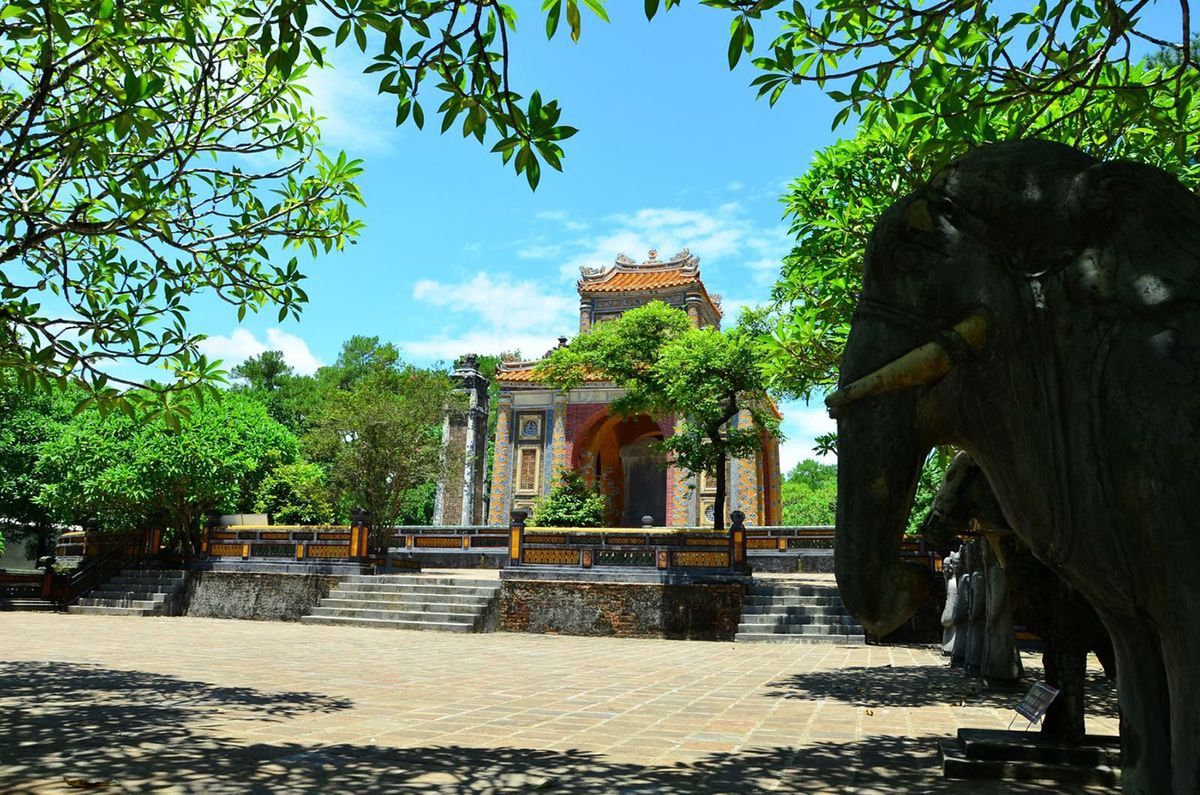
Behind Bi Dinh is Buu Thanh, built entirely of bricks on Tiny Khiem Tri. In the middle is the resting place of the talented and poetic king with the deepest knowledge in the Nguyen Dynasty. In addition, within the Khiem Lang area is Boi Lang, the resting place of King Kien Phuc, the seventh king of the Nguyen Dynasty.
Tourist Attractions Near Tu Duc Tomb in Hue City
Surrounding the Tu Duc Tomb area, there are many other attractive tourist destinations that draw visitors. Some notable places include:
- Vong Canh Hill: A famous tourist spot in Hue, Vong Canh Hill offers a panoramic view from the top, allowing visitors to admire the beautiful natural scenery and various ancient architectural structures nearby, such as Tu Duc Tomb and Thien Mu Pagoda.
- Thuy Xuan Village: An eco-tourism destination that attracts many visitors. Thuy Xuan Village features numerous homestays and resorts, as well as outdoor activities like elephant riding, boat trips, and fishing for tourists to relax and entertain.
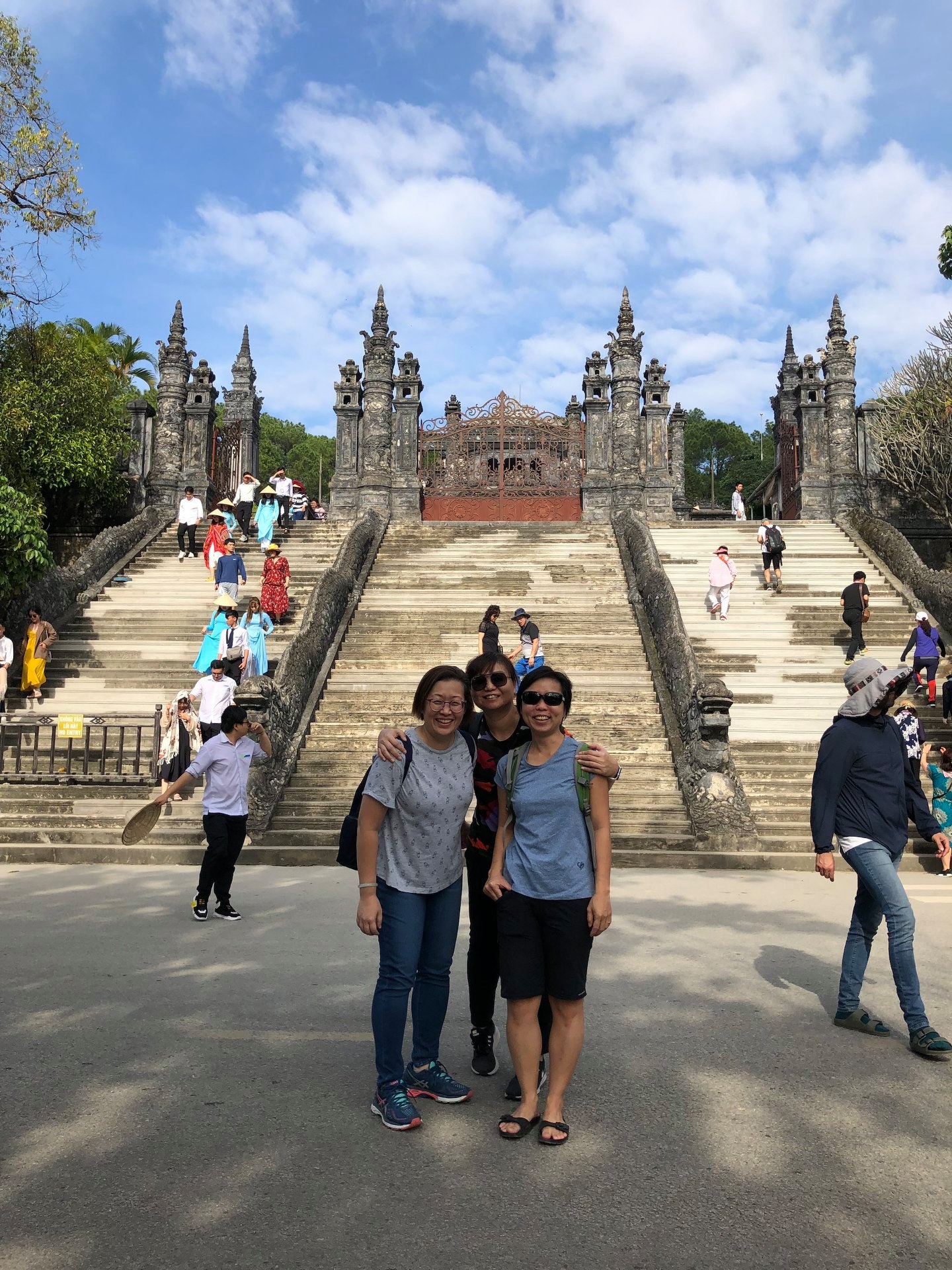
- Dong Khanh Tomb: This tomb was built to commemorate and preserve the legacy of King Dong Khanh, the 9th king of the Nguyen dynasty.
- Khai Dinh Tomb: Another nearby attraction is the Khai Dinh Tomb, which is known for its unique blend of Western and Eastern architectural styles. It is a majestic tomb built for the twelfth emperor of the Nguyen Dynasty, Khai Dinh.
Important Notes to Know When Visiting Tu Duc Tomb
Before visiting Tu Duc Tomb, travelers should take note of the following preparations:
- Clothing: Travelers may refer to images of Tu Duc Tomb to choose appropriate attire—something respectful, modest, and suitable for the historical significance and architectural colors of the site.
- Light snacks: Prepare light snacks and drinks to “recharge” energy during the visit.
- Sun protection items: Sunscreen, a jacket, a hat, sunglasses, etc., are essential items to help protect visitors from the elements during the trip.
- General hygiene: Tu Duc Tomb is a longstanding historical site, so visitors should be conscious of preserving the landscape and the environment during their visit.
Through the ups and downs of history, Tu Duc Tomb still stands there as the most vivid evidence of a glorious era of the gentle and profound king of yesteryears. Similar to other ancient structures in Hue, Tu Duc Tomb resembles a vintage painting, faintly exuding a nostalgic charm yet remaining captivating and alluring. If you have the opportunity to visit the ancient capital on a beautiful sunny day, be sure to explore Tu Duc Tomb!

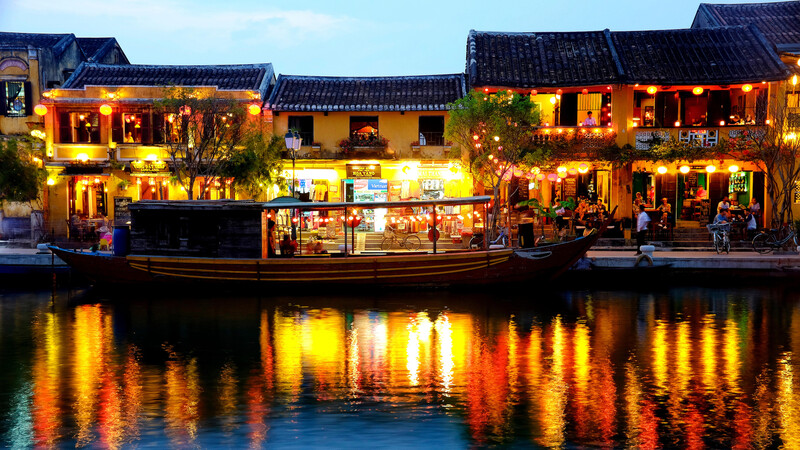

[…] just 1 km from Vong Canh Hill, you can head to Tu Duc Tomb after enjoying the serene beauty of the hill. This tomb is known for its ancient charm, blending […]